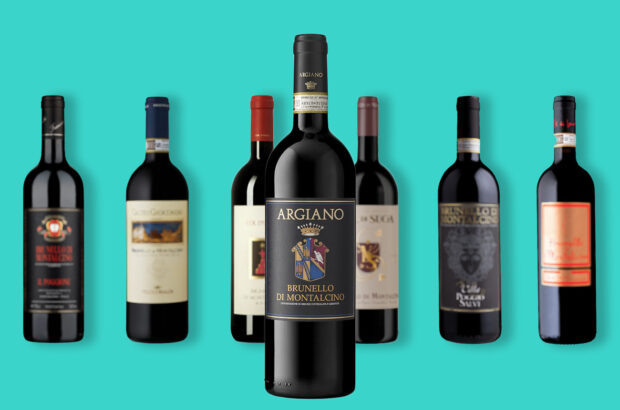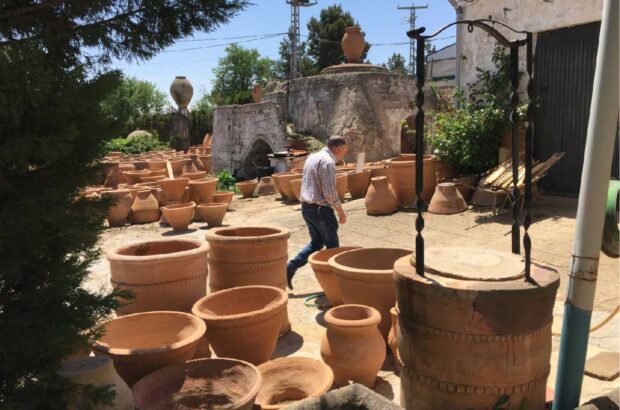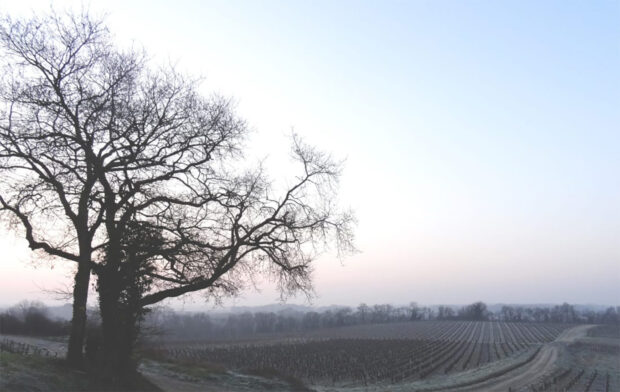'Sink your arm into it, feel the warmth, the sheer energy in the texture.' The pile of manure looms large in front of me at just one of the many Chile wineries. It sizes me up. I hedge.
‘Come on, gringo, you have to feel this hands on,’ urges Alvaro. His pressing gaze is no match for my rolling eyes, which fix briefly on bubbling barrels of organic remedies and biodynamic textbooks. So, with a weary sigh, I plunge my arm elbow-deep into the festering pile.
‘Isn’t it wonderful?’ enthuses Alvaro, his eyes sparkling. My suspicion that all winemakers really are a species unto themselves slowly becomes a grim certainty.
The charismatic Alvaro Espinoza, until recently the chief winemaker at the resurgent Carmen winery, embodies in many ways a new, emerging consciousness among Chile’s vinous finest. Shrewd, effervescent and acutely aware of the importance of encouraging foreign loyalties, Chile’s new breed of wine elite are fast waking up to the huge, and hitherto little tapped, potential of wine tourism. Why else would Tabontinaja, a tiny estate tucked away deep in the relatively unknown Maule Valley, be pouring money into creating a vast wine tourism honey pot? Themed cabins, alpaca and llama herds on show, fishing lakes, pony rides, hilltop barbecue areas, vine gardens complete with landscaped waterfalls, mountain biking with branded water, oil and honey for sale – all are washed down with some excellent estate wines.Does such behaviour come under that terrible transgression often labelled ‘selling out’? Quite the opposite, it’s cashing in, and about time too.
Following the ‘Great American Mould’ (Francisco Gillmore, ebullient owner of Tabontinaja, also owns the Laurel Lake winery in Long Island), Chilean wineries are pulling up their socks and outstretching arms to foreign visitors.Inland central Chile has for far too long been overlooked as foreign visitors struggle to resist the hypnotic pull of the country’s implausible range of stunning natural features. The searing reaches of the Atacama Desert, the exquisite Lake District and the captivating frozen beauty of the southerly polar region are just a few choice examples.
But the noble cause of wine is now prising open Chile’s central heartlands. And due to the country’s absurdly elongated geography, fine tours are to be had in surroundings ranging from the baked fringes of the Atacama to the damp, lush reaches of indigenous Mapuche country in the Bío-Bío and Itata Valleys further south.
Best affordable Chilean wines
The pick of the wineries
For making visits to Chile’s fine wineries, the relevant areas to the north and west of Santiago are the Limarí, Aconcagua and Casablanca Valleys.The dramatic Limarí Valley is the furthest winery north, a good four-hour drive or short plane hop from Santiago. The country here is semi-desert with verdant valley floors, and indeed the only winery of interest, Francisco de Aguirre, boasts an abandoned gold mine as its tasting room. The succulent Palo Alto Cabernet Franc and luxuriant Late Harvest complement the atmospheric surroundings perfectly.Some two hours drive due north of Santiago is the Aconcagua Valley, named after the highest peak in South America and also a major pass into neighbouring Argentina. Here the centrepiece is the impressive Errázuriz winery, midway along the valley, surrounded by precipitous hills, sprawling vineyards and fruit plantations.
The reception is invariably cordial, with the relevant nation’s flags often hoisted as a mark of respect (proof, I found during the Pinochet affair, that business will always transcend strife). Commendable wines abound, though, perhaps the Syrah Reserva and La Escultura Chardonnay are the pick of the bunch.
Aconcagua makes a good combination with a visit to the vaunted lands of the Casablanca Valley, via the historic coastal city of Valparaíso and Viña del Mar. In Casablanca, the misty mornings, cool afternoons and poor, sandy soils produce some stunning Sauvignons and Chardonnays – but remember to take something warm to wrap up in should the cold edge intrude.
Top wineries to visit here include Veramonte, an eye-catching terracotta-coloured winery constructed in a neo-classical style that sits at the inland head of the valley. The influence of US owners, Franciscan Vineyards, is clear to see from the English-speaking guides to the crammed gift shop, and the 1999 Sauvignon Blanc is exquisite. Nearby, Cuvée Mumm also offers visits, as well as a tasting bar, gift shop and some plump, comfortable sofas.
Around Santiago (the Maipo Valley), there are myriad options. Recommended visits closer to the centre are Chile’s oldest winery Cousiño Macul, with its atmospheric cellars and pervasive sense of history, as well as the statuesque Aquitania nearby. The latter is a tiny property set into the Andean foothills overlooking Santiago, partly owned by Château Margaux vigneron Paul Pontallier and Cos d’Estournel’s Bruno Prats. Their only wine is a Médoc-style blend named Domaine Paul Bruno.Slightly further out, the goliath among Chile’s wineries, Concha y Toro, runs regular tours in Pirque. Its joint venture with Mouton Rothschild, Almaviva, is a dazzling modernistic construction featuring James Bond-esque walls that fold up at the press of a button to reveal vineyards outside. The eponymous ultra-premium wine made here is perhaps Chile’s finest.
Due south lie tempting morsels such as the Santa Rita, with its underground restaurant and historic barrel cellar built in 1875 using the traditional Chilean mix of limestone and egg white known as cal-y-canto. Heading southwest, Undurraga has a great tour, a shop and majestic park on site where former military leader Augusto Pinochet was dined out of office.
South from Santiago into the heartlands of the Central Valley fruit basket come the wonderfully rich-sounding Colchagua and Cachapoal Valleys. The latter is home to Santa Amalia, where the Sauvignon Blanc Vieilles Vignes and the Grand Cru are breathtaking. Horseback riding and scenic barbecues are available here, where the owner is one Dominique Massenez, of the Alsatian family famed for their eaux-de-vie and fruits crèmes – evidence of which can be seen here in the copper alembics used to distil pear liqueur. To the south are the modern Morandé winery, with its own nursery and shop, and the delightful Torreón de Paredes, strewn with flowers and set beside a magnificent colonial tower and manor house. Both wineries have exemplary varietals and blends to offer.The Colchagua Valley boasts the most advanced Wine Route the country has to offer, with day trips including lunch and a visit to an action-packed museum. Top wineries to visit include Casa Lapostolle, whose Cuvée Alexandre line and Clos Apalta ultra-premium are outstanding, and the immensely pretty Bisquertt (La Joya Merlot is first-rate). The spectacular Caliterra, fruit of the Mondavi-Errázuriz union, is set in a valley of its own and the immaculate MontGras is also well worth a visit (try the sprightly varietals and the luscious Ninquén Barrel Select – fruit of new hillside plantings).Curicó is the next step on the southward trail, with vineyards belonging to the immense San Pedro lining Route 5 for kilometres near Molina. Near this town is also Echeverría, which won my vote for the best winery in Chile to visit (by an inch ahead of Torreón de Paredes) after a superb tasting and tour round the startlingly fuchsia-coloured winery with the charming Roberto Echeverría the younger.
Just to the north beside Route 5 near Lontué is Miguel Torres, named after the man whom many consider to be the father of modern Chilean winemaking. The visiting facilities, such as video and tasting room, are highly rated, as are the wines. These range from the mouth-watering, zesty varietals to a newly released mouth-filling delight named Cordillera.
The Maule Valley also has an emergent Wine Route, encompassing the Claro and Loncomilla Valleys. The most northerly, Claro Valley, is home to US winery Kendall-Jackson’s new Calina estate (the Merlot Reserve is toffee and plums spooned into a glass), as well as the more rustic charms of Domaine Oriental and Casanova.The Loncomilla Valley is the true treasure trove – with two gems. Balduzzi in San Javier is owned by the intelligent and charming host Don Jorge – the visit is personal and memorable, with sights including a spectacular park packed with soaring indigenous tree species like raulí and monkey-puzzles. Nearer the coast is the infectious atmosphere of Tabontinaja (mentioned above), where a taste, or perhaps much more, of the Cabernet Franc is one of Chile’s most special experiences.
In the Tutuven Valley, the most southerly part of Maule, both the cooperative Lomas de Cauquenes and its winemaker-cum-marketing genius Claudo Barría are well worth getting to know. In addition, Martínez de Salinas, owned by the effusive Alfredo Bisello of Italian descent, is surprising many with the quality of its wines, especially the Merlot and Chardonnay.The country is captivating. The wineries are enough to keep a half-baked writer busy for many years to come. Personal favourites include Echeverría, Torreón de Paredes, and Errázuriz, largely in part to the personal welcome received and the sheer passion displayed for their unique styles of winemaking. Balduzzi and Tabontinaja are undoubtedly two undiscovered pearls in the south and also come highly recommended. The choice is yours.












